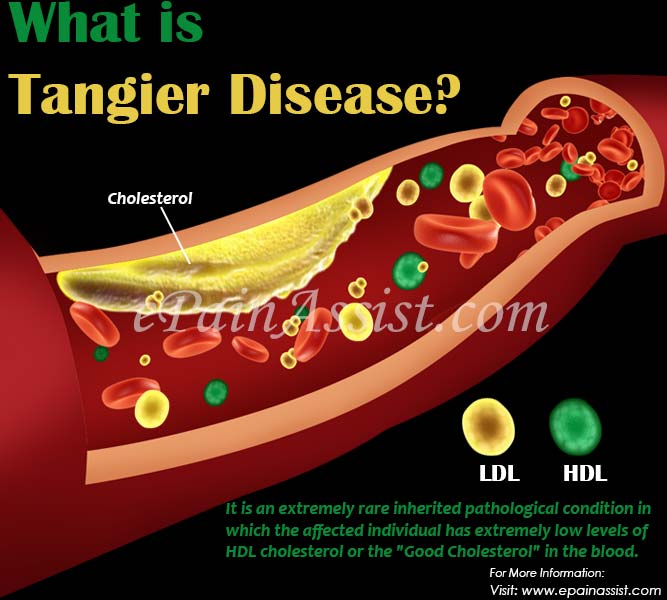What Is Tangier Disease?
Tangier Disease is an extremely rare inherited pathological condition in which the affected individual has extremely low levels of HDL cholesterol or the “Good Cholesterol” in the blood. The function of the HDL cholesterol is to remove cholesterol which may have accumulated on the arteries especially the coronary artery and keeps the heart healthy.
The classic presenting feature of Tangier Disease are enlargement of the spleen and liver, lymph node swelling. Additionally, an individual with Tangier Disease will be at an increased risk for having cardiovascular diseases due to accumulation of cholesterol in the arteries or walls of the arteries of the coronary arteries.
On laboratory investigation, an individual with Tangier Disease will have significantly increased levels of triglycerides. The ABCA1 is the gene responsible for the development of Tangier Disease.

What Are The Causes Of Tangier Disease?
As stated, mutations in the ABCA1 gene is the root cause for the development of Tangier Disease. This gene is responsible for production of protein which facilitates movement of cholesterol from inside the cell to apolipoprotein which is a major constituent of HDL.
Due to mutation in the gene, the production of this protein is impaired such that cholesterol is not able to be moved out of the cell to the apolipoprotein. This process can be further understood by the fact that cholesterol is something which cannot dissolve in blood and thus it needs to be transported from cells by lipoproteins.
There are many types of lipoproteins but the main two types of lipoproteins are LDL and HDL which are low density lipoprotein and high density lipoprotein.
HDL cholesterol is called as good cholesterol as it removes cholesterol build up from the arteries especially the coronary artery and thus protects the individual from the risks of cardiovascular diseases whereas the LDL cholesterol does the job of depositing cholesterol in the arteries thus increasing the risk of an individual to have cardiovascular diseases.
Individuals with Tangier Disease tend to have significantly reduced levels of HDL cholesterol thus putting them at risk for various complications that arise out of increased cholesterol levels especially cardiovascular risk factors apart from the increased cholesterol affecting the liver and spleen as a result of Tangier Disease.
What Are The Symptoms Of Tangier Disease?
The presenting features of Tangier Disease are quite variable and depend on the organs which are affected by the disease condition and the severity of the condition. Yellow colored tonsils are the first presenting symptom of Tangier Disease. This is because of accumulation of fatty deposits in the tonsils. The accumulation of fatty deposits can also occur in other organs of the body like throat, liver, or spleen.
An individual may also experience peripheral neuropathy as a result of fatty accumulation in the nerves characterized by loss of sensation. Cardiovascular disease is also a known symptom of Tangier Disease in adults. Clouding of the cornea is also one of the symptoms of Tangier Disease, although rare.
How Is Tangier Disease Diagnosed?
A thorough clinical evaluation of the patient along with a detailed history can point towards a diagnosis of Tangier Disease. In case if there is another family member with a known diagnosis of Tangier Disease then this also helps in confirming the diagnosis of Tangier Disease.
Laboratory investigations will clearly show low levels of HDL cholesterol further pointing towards a diagnosis of Tangier Disease. A genetic test can also be done which will clearly show mutation in the ABCA1 gene which will confirm the diagnosis of Tangier Disease.
How Is Tangier Disease Treated?
The treatment for Tangier Disease is basically symptomatic and supportive. Surgery may be required for patients who have enlarged spleen, throat or tonsils. Medications may be given to lower the levels of bad cholesterol of LDL and prevent accumulation of deposits in the coronary artery and prevent any risk of cardiovascular diseases.
Periodic cardiac assessment and close monitoring of the cholesterol levels is absolutely mandatory for patients so as to prevent any complications of Tangier Disease.
